The myth persists: carbon fiber bike frames are delicate, high-maintenance items prone to cracking from the slightest impact. For many riders considering an upgrade, this lingering doubt holds them back from experiencing the incredible performance of modern carbon. It's time to separate fact from fiction. The reality is that with advanced engineering and materials like the T800 full carbon fiber used in frames such as the Trifox X16QR, today's carbon frames are remarkably durable, high-performance machines built to last.
The Engineering Behind the Strength: More Than Just "Carbon"
The perception of fragility often stems from early carbon technology. Modern frames are a different story. They are not made from a single, brittle piece of material. Instead, they are composites—carefully layered sheets of carbon fiber (like the UD weave on the X16QR) bonded with high-strength resin. This allows engineers to strategically place strength and stiffness exactly where it's needed: along the downtube and chainstays for pedaling efficiency, and with compliance designed into the seatstays for comfort.
A key indicator of a frame's robust design is its intended use and the warranties that back it. A serious frameset like the X16QR, which comes with a 2-year warranty and is built for the rigors of road riding, racing, and long-distance trips, is engineered to be a reliable long-term investment. Its BSA threaded bottom bracket and tapered headtube are hallmarks of durable, proven design that withstands constant stress. 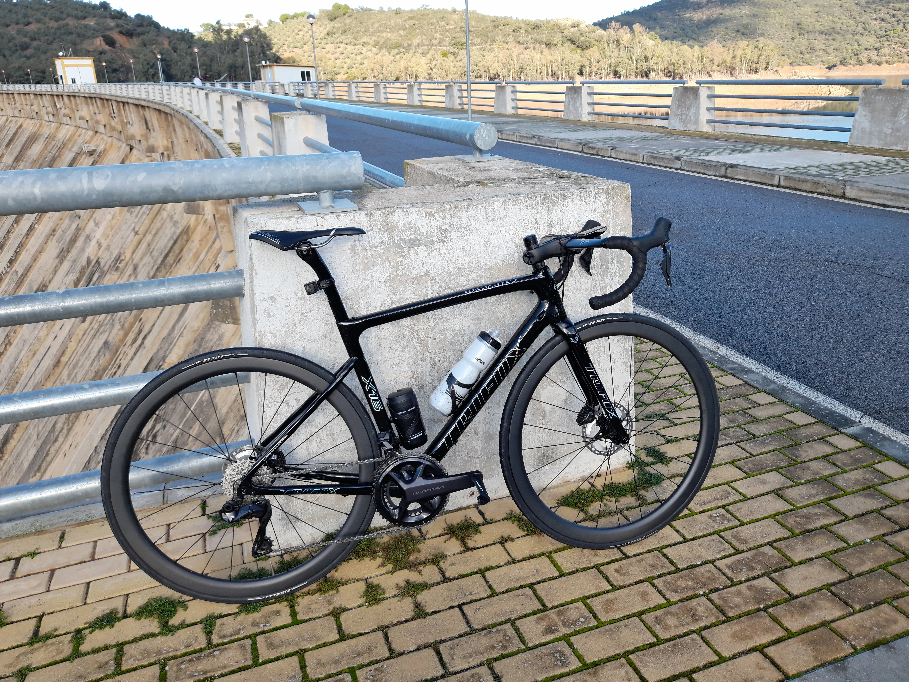
The Real Weakness: Impact vs. Fatigue
It's crucial to understand what carbon handles well and what requires caution.
Excellent Fatigue Resistance: Unlike metals that can weaken with repeated stress cycles, a properly manufactured carbon frame is exceptionally resistant to fatigue from pedaling forces, road vibrations, and normal riding. This is a primary reason carbon is favored for long-term durability in high-stress applications.
Point Impacts Are the Concern: The primary vulnerability of carbon is localized, sharp impact. Think of a direct, hard strike from a rock or a crash where the frame hits a sharp edge. This is different from the overall "fragility" myth. Aluminum can dent in such an event, while carbon might crack. However, modern layups and protective clear coats are very resilient.
Built to Last: The Trifox X16QR as a Case Study
Examining a specific frame dispels the myths. The Trifox X16QR is a perfect example of a durable, modern carbon road frame:
Premium Material: Its T800 carbon fiber is a high-grade material offering an excellent balance of low weight and high strength.
Practical, Resilient Features: It uses a V-brake and quick-release system, a testament to its versatile and robust design philosophy suitable for a wide range of components and riders.
Real-World Proven: With a complete frameset weight starting around 875g (for a 44cm size), it achieves incredible lightness without sacrificing the structural integrity needed for aggressive riding and climbing, proving that lightweight does not equate to weak.
Conclusion: A Durable Choice for Discerning Riders
The narrative that carbon frames are fragile is an outdated relic. Today's carbon frames, especially performance-oriented models like the Trifox X16QR, are the product of decades of advancement in composite engineering. They are designed to be stiff, efficient, comfortable, and—importantly—durable enough for years of demanding use. The real risk isn't in riding a quality carbon frame; it's in missing out on the responsive, exhilarating, and yes, robust ride experience that only modern carbon can provide. Choose a well-designed frame from a reputable brand, follow basic care (like using a torque wrench), and enjoy the confidence that comes with a strong, lightweight machine.
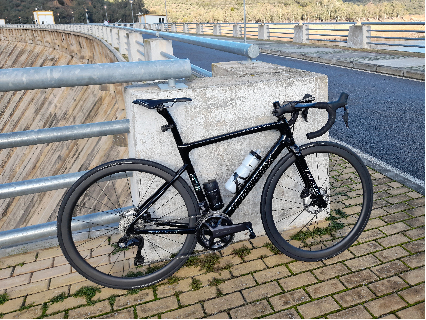
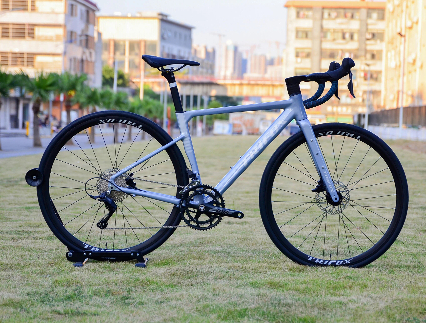
Stepping into the world of road cycling can be both exciting and overwhelming. With countless options available, choosing the right first bike becomes crucial to your cycling journey. The Trifox R241 700C Aluminium Frame Road Bike stands out as an exceptional choice, combining performance, reliability, and value in one package. Here's why a 22-speed disc brake aluminum road bike makes for the perfect first serious ride.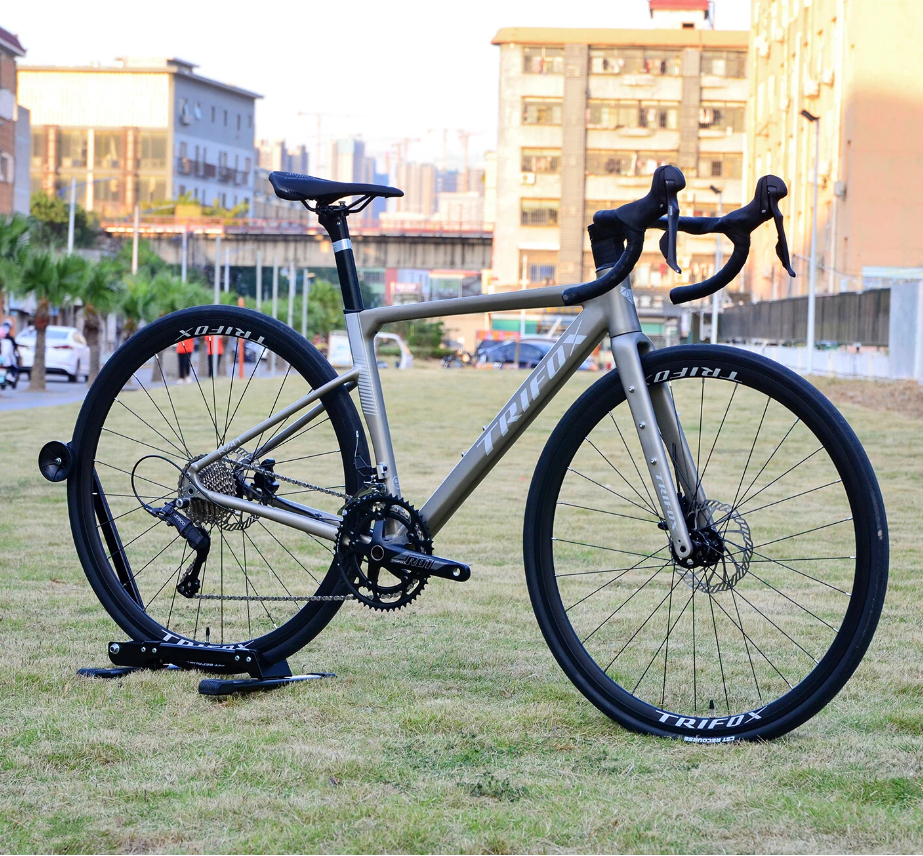
The Ideal Balance of Performance and Control
For beginners seeking their first serious road bike, the 22-speed drivetrain offers versatility across various terrains. Whether you're tackling steep hills or enjoying flat sprints, the wide gear range ensures you'll always have the right cadence. Paired with reliable disc brakes that provide consistent stopping power in all weather conditions, this setup builds confidence for new riders. The aluminum road bicycle frame delivers the perfect blend of durability and responsive handling, making it one of the good road bikes for beginners who want to progress quickly.
Why Aluminum Frames Make Excellent Starter Bikes
Aluminum frames have long been the go-to choice for entry-level and intermediate riders, and for good reason. The Trifox R241 features a lightweight aluminum frame that offers exceptional stiffness and power transfer. This means more of your pedaling effort translates into forward motion, giving you that authentic racing bicycle feel without the premium price tag. As an affordable road bike, it delivers performance characteristics that rival more expensive models, making it the best beginner road bike for those wanting to experience true road cycling performance.
Disc Brakes: Safety and Reliability for New Riders
One of the most significant advantages of this configuration is the inclusion of disc brakes. Unlike traditional rim brakes, disc brakes provide superior modulation and stopping power, especially in wet conditions. For beginners still developing their bike handling skills, this added safety margin is invaluable. The consistent performance of disc brakes allows new riders to focus on building technique and confidence rather than worrying about braking efficiency.
The Perfect Platform for Growth
What makes the Trifox R241 particularly special is its ability to grow with you as your skills develop. The quality aluminum frame serves as a solid foundation that can accommodate future upgrades, while the 22-speed gearing provides enough range to challenge you as you become stronger and more confident. It's not just a beginner bike - it's a platform that will support your progression in the sport.
Exceptional Value Without Compromise
In the world of road cycling, it's easy to spend thousands on a high-performance machine. However, the Trifox R241 demonstrates that you don't need to break the bank to get a quality ride. As one of the most affordable road bikes with premium features like a alloy 6061 fork and disc brakes, it offers tremendous value. The alloy fork specifically helps dampen road vibrations, adding comfort to your rides without sacrificing the responsive nature of an aluminum road bicycle.
Ready for Your Cycling Journey
Starting your road cycling adventure with the right equipment sets the tone for your entire experience. The 22-speed disc brake aluminum road bike represents the sweet spot for newcomers to the sport - capable enough to handle serious riding, forgiving enough to build confidence, and affordable enough to get you started without second thoughts. It's the best beginner road bike choice for those who are serious about developing their cycling skills while enjoying every mile.
The Trifox R241 combines all these elements into a package that's ready to roll. Whether you're looking to join group rides, tackle your first century, or simply enjoy the freedom of road cycling, this bike provides the perfect starting point for your journey on two wheels.
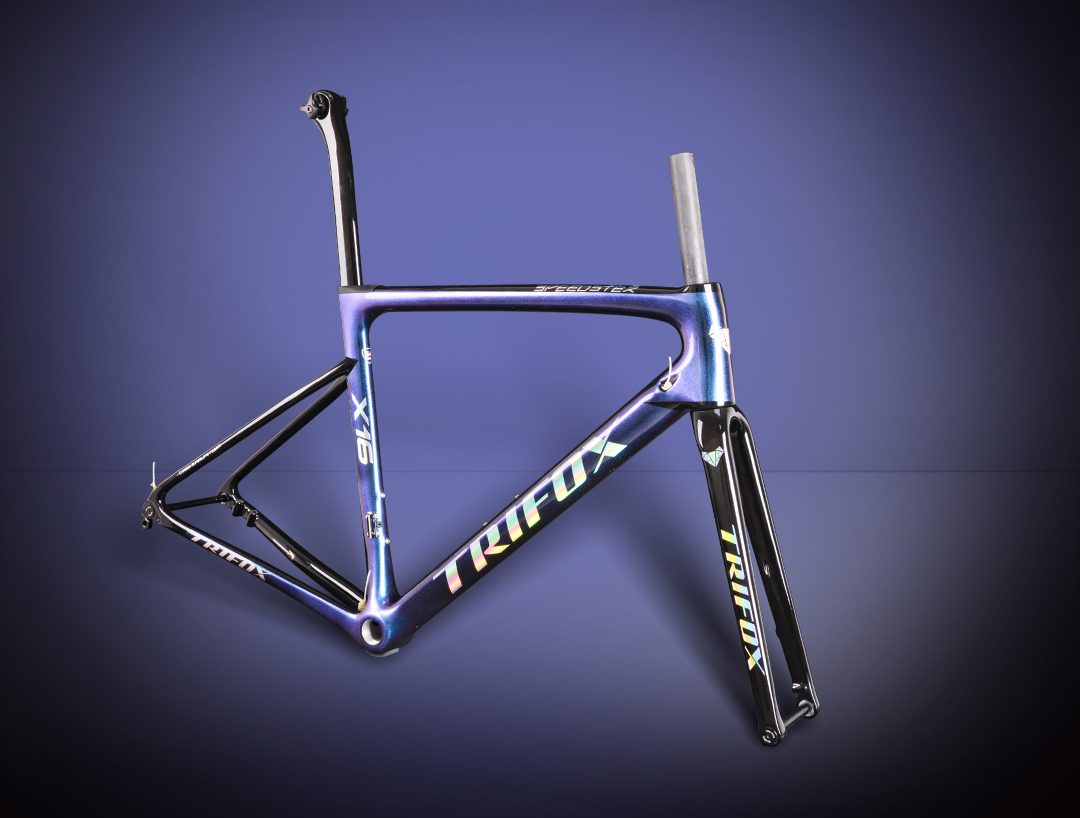
What makes a road bike frame truly popular? It's not just hype – it's the perfect blend of performance, value, and real-world usability. Trifox's X16 Disc Brake Carbon Frame consistently tops their charts, and for good reason. Let's dive into what makes this frame a standout choice for discerning riders:
Uncompromising Lightweight Performance: Crafted from high-modulus T800 carbon fiber, the X16 boasts an impressive frame weight hovering around 900g (size dependent). This translates directly to snappier acceleration, effortless climbing, and a lively, responsive ride that feels eager under power. It's pure road buzz without the penalty.
Disc Brake Dominance: Embracing the modern standard, the X16 features flat-mount disc brake compatibility. This means superior stopping power in all conditions – wet descents, tight corners, or emergency stops – offering consistent modulation and control that rim brakes simply can't match. Confidence is key to speed.
Stiffness Meets Comfort: Trifox engineers didn't just chase grams. The X16 features a stiff front triangle (head tube, down tube, bottom bracket) for razor-sharp handling and efficient power transfer when you stomp on the pedals. Yet, the carefully shaped thin seatstays and fork provide crucial vertical compliance, absorbing road buzz and reducing fatigue on longer rides. You get race-ready feedback without the harshness.
Modern, Versatile Geometry: The X16 strikes a brilliant balance. Its geometry leans towards aggressive (think shorter headtubes, longer reaches) for efficient power output and aerodynamic potential, yet remains accessible enough for spirited club rides and gran fondos. It’s a frame built for speed that doesn’t demand a pro-level contortion.
Smart, Rider-Focused Design:
Threaded Bottom Bracket (BB86): A massive win for reliability and home mechanics. No press-fit creaks here! Easy installation and long-term peace of mind.
Full Internal Cable Routing: Creates a sleek, aerodynamic profile while protecting cables and hoses from the elements. Looks pro, functions flawlessly.
Wide Compatibility: Accommodates electronic and mechanical groupsets, 28c+ tires (great for comfort/rough roads), and standard 27.2mm seatposts for tuning ride feel.
Why the X16 Resonates:
It delivers pro-level pedigree (lightweight carbon, advanced shaping, disc performance) at a direct-to-consumer price that makes high-performance cycling genuinely accessible. You're not paying for flashy marketing or dealer markups – just exceptional engineering focused on the ride.
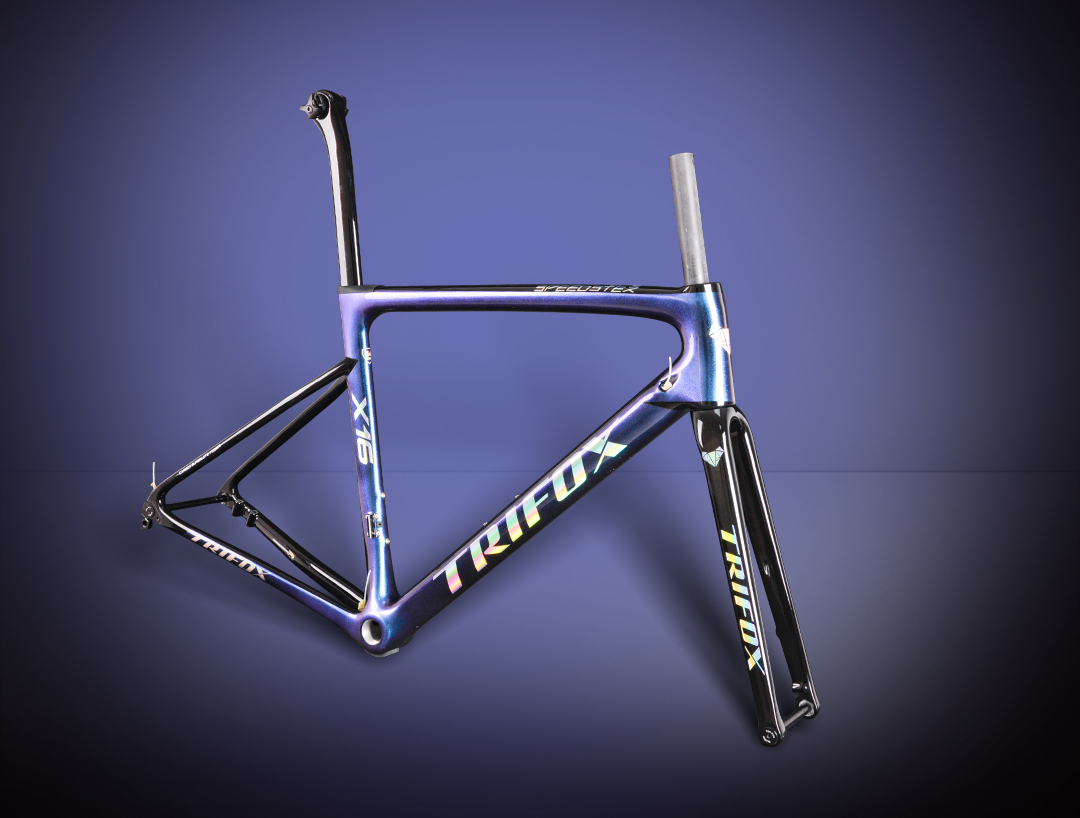
The Trifox X16 isn't just popular; it's popular for a reason. It masterfully combines the essential ingredients modern road riders crave: lightweight carbon efficiency, the confidence of disc brakes, a balanced blend of stiffness and comfort, and practical, reliable design – all wrapped up in a package offering outstanding value. If you're seeking a frame that punches far above its weight class and forms the foundation of a truly exciting road machine, the X16 is Trifox's testament to smart performance.
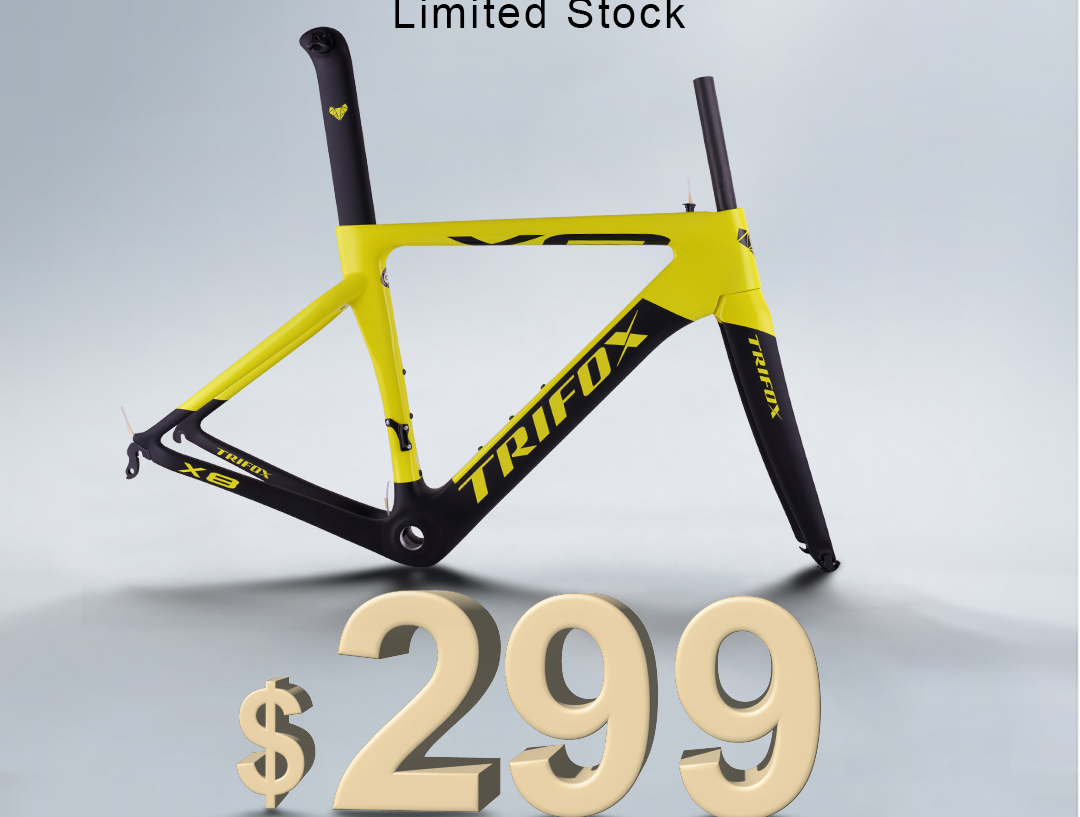
Yes, you read that right. $299 for a full Aero Carbon Road Bike Frame. Trifox Bike's X8 model is dropping jaws and potentially barriers to entry for carbon performance. But is this too good to be true? Let's break it down.
What You Get (Specs Matter!):
Material: Toray T800 Carbon Fiber . This is a legitimate, high-modulus grade used by many reputable brands.
Weight: Claimed ~1250g (size M) – impressively light for the price.
Aero Design: Truncated airfoil tube shapes, integrated seatpost clamp, and aero seatpost (included!) aim to cheat the wind.
Compatibility: Designed for rim brakes (V-brakes/cantilevers - crucial point!), standard road groupsets (Shimano 10/11s), and a conventional cockpit. Includes headset, seatpost clamp, and derailleur hanger.
If you dream of a lightweight carbon build but have champagne taste on a beer budget, this is your starting block.
Prioritize weight and aero gains? Don't mind rim brakes? This could be a rocket ship.
Experienced Tinkerers: Comfortable sourcing parts and building a bike? The value proposition is immense.
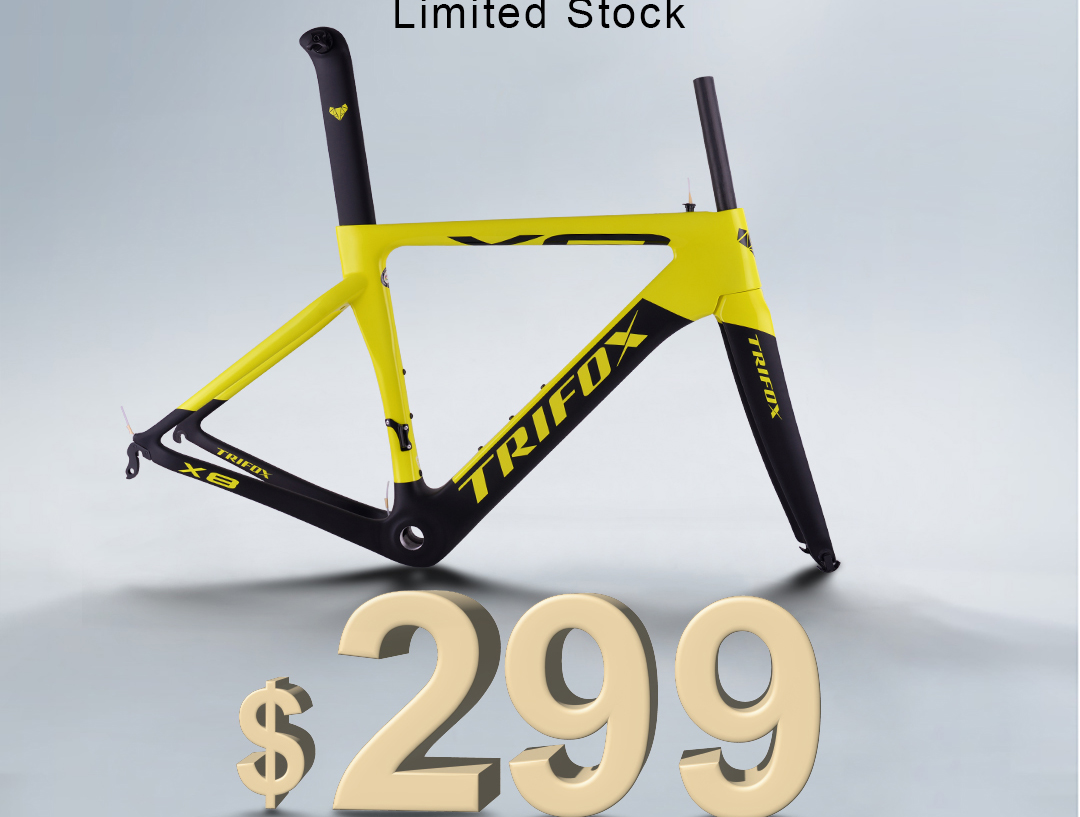
The Trifox X8 frame is a legitimate disruptor. For $299, you get a very light, aero-profiled carbon frame using reputable materials.
Is it worth it? If you understand the limitations, crave a lightweight carbon project, and prioritize raw speed/weight over all-weather braking and cutting-edge standards, this deal is borderline revolutionary. It proves high-performance carbon can be accessible.
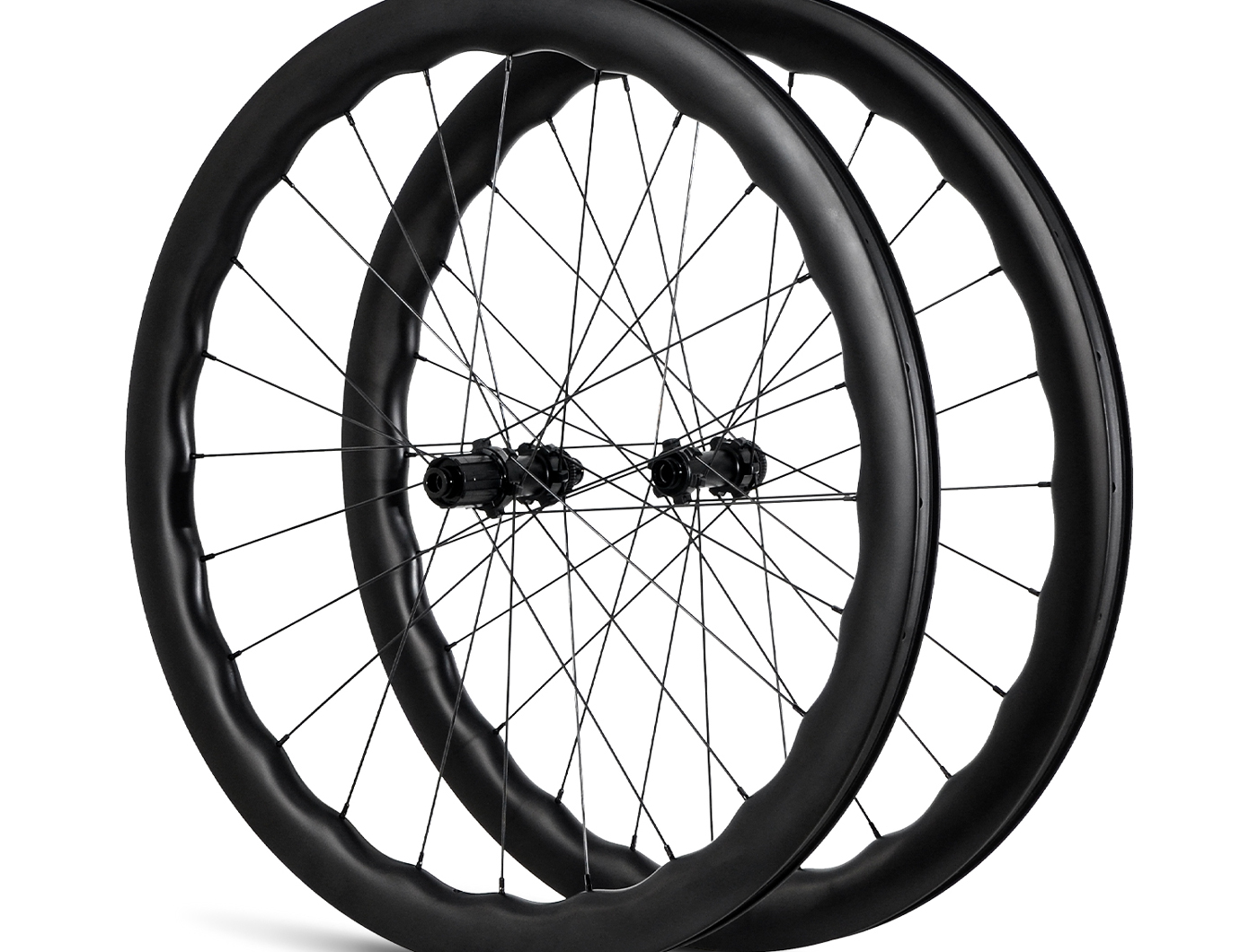
Upgrading to carbon wheels is a significant investment, but the performance gains are often transformative, not just incremental. Here’s how they change your ride:
1. Weight Savings = Acceleration & Climbing Magic:
Rotational Weight Matters Most: Shedding weight from the wheels (especially the rim) makes a HUGE difference. Lighter rims accelerate faster and climb easier because you're spinning mass, not just carrying it. You feel this instantly when sprinting or attacking hills.
2. Stiffness = Precision & Power Transfer:
Lateral Rigidity: Carbon rims resist flex under hard pedaling and cornering forces. This translates to:
Sharper steering response.
More direct power transfer (less energy lost to flex).
Increased confidence railing corners and pumping terrain.
3. Aerodynamics = Free Speed (Especially Cruising):
Smoother Airflow: Well-designed carbon rims slice through the air more efficiently than boxy aluminum counterparts. This reduces drag noticeably at sustained speeds above ~18-20mph, saving watts on flats and rolling terrain.
4. Vibration Damping = Smoother Ride & Reduced Fatigue:
Material Properties: High-quality carbon layups can absorb high-frequency trail buzz better than aluminum. This reduces hand, arm, and body fatigue on long, rough rides, improving comfort and control.
5. Strength & Durability (When Done Right):
Modern Engineering: Contrary to myths, properly built carbon wheels (from Trifox brands) are incredibly strong and impact-resistant. They excel at handling sharp hits and offer excellent fatigue resistance compared to aluminum.
The Caveats:
Braking Performance: Requires specific resin brake pads and proper bedding-in. Wet-weather performance can still lag slightly behind top aluminum.
Impact Sensitivity: While strong, massive, square-edge hits can cause damage aluminum might dent instead. Ride style and terrain matter.
Diminishing Returns for Casual Riders: The gains are most pronounced for fit, experienced riders pushing their bikes.
Who Feels the Biggest Difference?
- Climbers & Accelerators: Feel the weight savings instantly.
- Aggressive Trail/Enduro/DH Riders: Appreciate the stiffness and damping on rough descents.
- XC & Gravel Racers: Benefit from weight, aero, and stiffness efficiency.
- Riders Seeking "Ride Feel": The damped, lively, precise sensation is unique.
Carbon wheels make a substantial, multi-faceted difference. They are lighter, stiffer, often more aerodynamic, and can provide a smoother, more controlled ride. While expensive, they deliver tangible performance benefits that significantly alter how the bike feels, accelerates, climbs, and handles. For riders prioritizing performance and willing to invest, the upgrade is often considered one of the most impactful you can make.
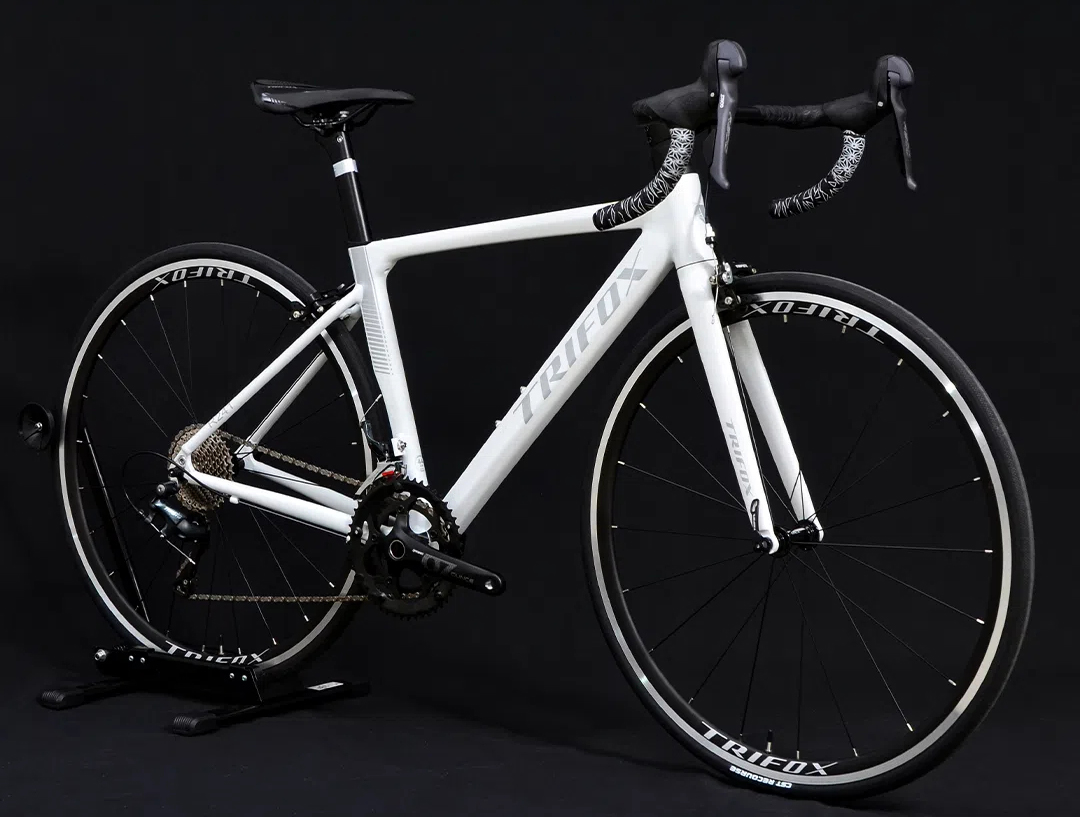
Looking for a capable, lightweight entry into road cycling without breaking the bank? The Trifox 2024 C-Brake Ultralight Aluminium Frame Road Bike, equipped with a Shimano Tiagra R4700 2x10spd groupset, presents a compelling package centered around classic rim brakes ("C-brakes"). Let's break down what this 700c aluminium machine offers.
The Core Proposition: Lightweight & Efficient
The headline act is the "ultralight" 700c aluminium frame. Trifox claims a total bike weight around 9.5kg, which is impressive for a sub-$800 bike. This low weight translates directly to easier acceleration and climbing, a major plus for new riders tackling hills or anyone seeking a responsive ride. The 700c wheels are the road standard, prioritizing rolling efficiency and speed on smooth surfaces.
Groupset: Reliable Tiagra Performance
Shimano's Tiagra R4700 groupset is the standout component here. Sitting just below the 105 tier, it offers:
- Smooth & Precise Shifting: 10-speed gearing provides ample range (likely a compact crankset like 50/34T paired with an 11-32T or 11-34T cassette) for varied terrain.
- Durability: Tiagra is known for its robust performance and longevity, perfect for regular training, commuting, or sportives.
- Modern Features: R4700 benefits from trickle-down tech from higher groupsets, offering crisp lever feel and reliable operation. The 2x10 setup gives plenty of gears for most situations.
The "C-Brake" Focus: Classic Stopping Power
This bike uses traditional rim brakes (caliper brakes). In the era of disc dominance, this is a deliberate choice impacting price and performance:
Significantly lighter weight than disc brake systems, contributing to the bike's low overall mass. Simpler maintenance – easier to adjust, pad changes are quick and cheap. Generally more aerodynamic. Keeps the price point aggressively low.
Wheelset & Finishing Kit
The included R4700 wheelset is a typical OEM offering: functional, durable, and reasonably lightweight, but not a performance highlight. They get the job done reliably. Expect basic but serviceable finishing kit (handlebar, stem, seatpost, saddle) designed for comfort and fit adjustment.
Target Rider & Verdict
This Trifox bike is squarely aimed at:
1. New Road Cyclists: Seeking a lightweight, efficient first road bike with reliable shifting.
2. Budget-Conscious Riders: Wanting maximum performance for minimal outlay.
3. Fair-Weather/Fitness Riders: Primarily riding in dry conditions where rim brakes are perfectly adequate.
4. Weight Weenies on a Budget: Prioritizing low overall weight above all else.
Is it a Good Buy?
For the right rider, absolutely. Exceptional value for a full Tiagra groupset. Very competitive lightweight frame. Efficient 700c wheelset. Classic, simple road bike feel. Easy maintenance.
The Trifox Ultralight Tiagra C-Brake bike is a smartly specced budget road rocket. It delivers the core road cycling experience – lightweight efficiency and smooth, reliable shifting via Shimano Tiagra – by embracing the simplicity and cost savings of rim brakes. If you prioritize weight and value, ride mostly in good conditions, and want proven componentry, this is a compelling contender that punches well above its price point.
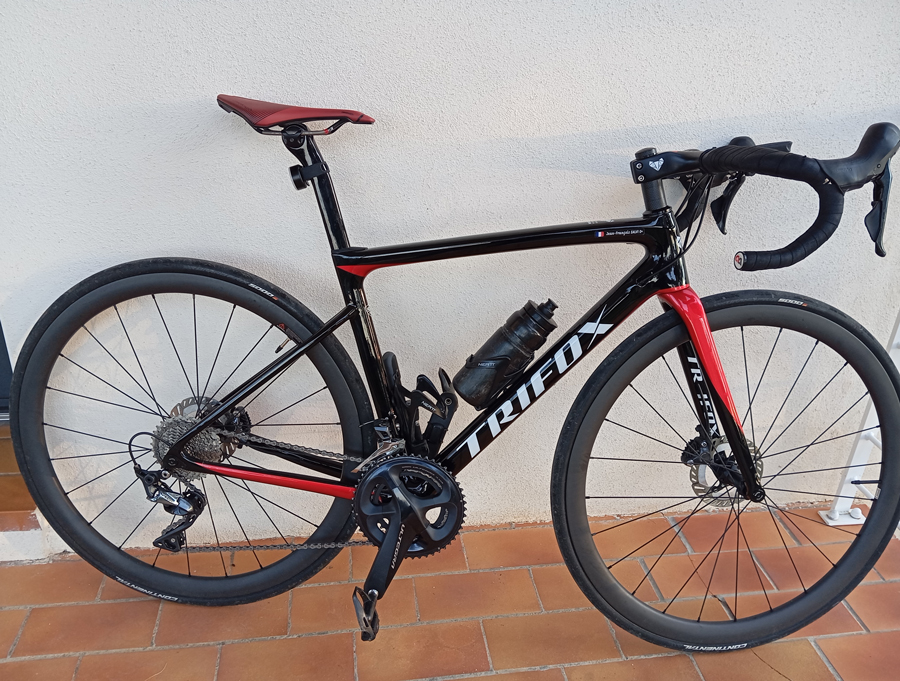
Dreaming of effortless climbs and responsive sprints? A lightweight road bike unlocks that exhilarating ride. But with countless options, choosing "the one" can feel overwhelming. Let’s break down the key factors to find your perfect featherweight steed:
1. Frame Material: The Core of Lightness
- Carbon Fiber (King of Light): The go-to for serious weight savings. Offers an exceptional strength-to-weight ratio, vibration damping, and aerodynamic shaping. High-modulus carbon delivers the ultimate lightness and stiffness (like the Trifox Carbon Fiber Ultra-Light Road Bicycle). Consider frame grade (T700, T800, T1000) – higher usually means lighter/stiffer but pricier.
- Aluminum: A great value option. Modern hydroformed alloys are surprisingly light and stiff, though often slightly heavier and harsher than carbon. Ideal for budget-conscious riders wanting performance.
- Titanium: Luxuriously smooth, corrosion-resistant, and reasonably light, but typically heavier than top carbon and significantly more expensive. A niche, durable choice.
- Steel: Beloved for its classic ride quality (smooth, compliant), but generally the heaviest option. Modern alloys are lighter, but rarely compete on pure weight.
2. Components: Where Grams Add Up
Lightweight frames need lightweight partners:
- Groupset: Higher-tier groupsets (Shimano Ultegra/Dura-Ace, SRAM Force/Red, Campagnolo Chorus/Record/Super Record) use more carbon fiber, titanium, and advanced alloys to shed grams. Focus on the drivetrain (crankset, derailleurs, cassette) and brakes.
- Wheelset: This is CRUCIAL! Lightweight carbon wheels make a massive difference in acceleration and climbing. Look for low rim weights and consider aerodynamic profiles too. Quality hubs (sealed bearings) ensure smooth rolling.
- Cockpit & Finishing Kit: Carbon handlebars, seatposts, and saddles contribute noticeable savings. Every gram counts!
3. Geometry & Fit: Light AND Right
A super-light bike is useless if it doesn’t fit! Consider:
- Riding Style: Race geometry is aggressive (low, stretched). Endurance geometry is more relaxed (taller headtube, shorter reach) for comfort on long rides. Choose what suits your goals.
- Professional Sizing: Don't guess! Get a professional bike fit or at least use sizing charts meticulously. The right size ensures efficiency, power transfer, comfort, and prevents injury.
4. Balancing Priorities: Weight vs. Everything Else
- Budget: Lightweight comes at a premium, especially carbon fiber and top components. Set a realistic budget. Sometimes, a slightly heavier frame with better wheels/components is smarter than the lightest frame with budget parts.
- Ride Quality: Ultra-stiff frames/wheels can feel harsh. Look for frames designed with compliance (like specific carbon layups) if comfort is key.
- Durability: Ensure the lightweight construction doesn't sacrifice reliability, especially for wheels and critical components.
Putting it Together: Your Checklist
1. Set Your Budget: Be realistic.
2. Prioritize Frame Material: Carbon is the lightweight benchmark.
3. Focus on Wheels: Allocate a significant part of your budget here.
4. Choose Appropriate Groupset Tier: Match performance level and weight goals.
5. Get the RIGHT SIZE & Geometry: Non-negotiable for performance and comfort.
6. Consider Finishing Kit: Carbon bars/seatpost for final tuning.
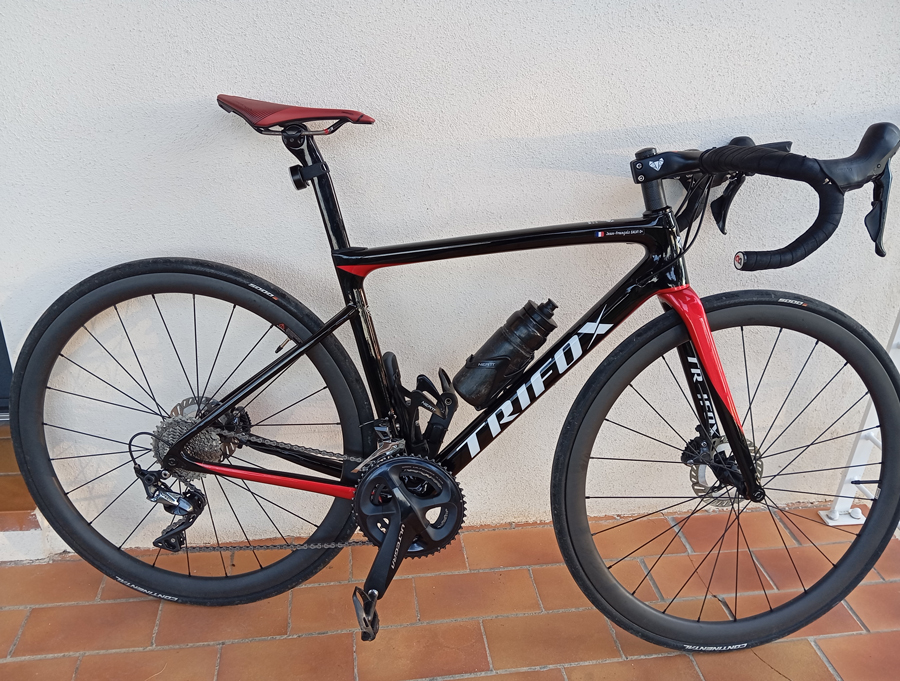
For riders seeking the pinnacle of carbon engineering focused on minimal weight without sacrificing stiffness, explore dedicated ultra-light platforms.
The Trifox 700c Carbon Fiber Ultra-Light Road Bicycle exemplifies this pursuit, showcasing how high-modulus carbon creates a responsive, agile machine built for conquering climbs and accelerating with ease. Remember, the perfect lightweight bike is the one that fits you perfectly and brings a smile to your face on every ride!
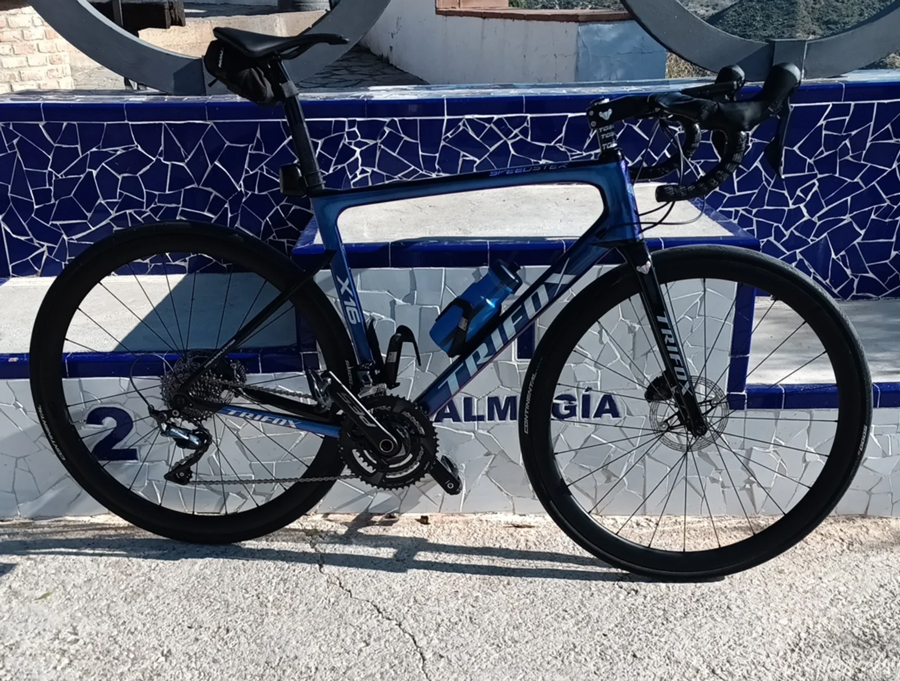
In the fast-paced world of road cycling, every gram matters. For riders chasing speed, efficiency, and climbing prowess, the quest for the lightest bike is never-ending. Enter the Trifox X16, a marvel of engineering poised to dominate 2025 as one of the world's lightest road bikes. Let’s dive into what makes this machine a game-changer.
Featherlight Frame, Uncompromised Strength
At the heart of the X16 lies its ultra-lightweight carbon fiber frame. Trifox's advanced monocoque construction uses high-modulus carbon to shed weight without sacrificing stiffness or durability. The result? A bike that accelerates like a rocket and climbs with effortless agility, yet remains robust enough for punishing races or long-distance rides.
Premium Components for Peak Performance
The X16's weight savings extend beyond the frame. It's equipped with a Shimano Dura-Ace R9200 groupset, renowned for its crisp shifting and feathery weight. Pair this with Trifox's own carbon wheelset—1,350 grams of aerodynamic efficiency—and you’ve got a bike that’s as responsive as it is swift. Even the cockpit gets the lightweight treatment, featuring an integrated carbon handlebar-stem combo that trims grams while enhancing aerodynamics.
Aero Design Meets Comfort
Lightweight doesn't mean sacrificing comfort. The X16's frame incorporates strategic tube shaping to slice through wind, while its tuned compliance absorbs road vibrations. Whether you're sprinting on smooth tarmac or tackling cobbled climbs, this bike balances speed and ride quality seamlessly.
Why the Trifox X16 Stands Out
In a market flooded with lightweight contenders, the X16 shines with its balance of affordability and elite performance. Many sub-7kg bikes come with five-figure price tags, but Trifox delivers pro-level specs at a fraction of the cost. It’s a top pick for competitive cyclists and enthusiasts alike who refuse to compromise on weight or budget.
Ready to experience the future of road biking? The Trifox X16 redefines what’s possible in 2025. Learn more or secure yours here: Trifox X16. Lighten your ride, elevate your speed—this is the ultimate machine for those who chase horizons.
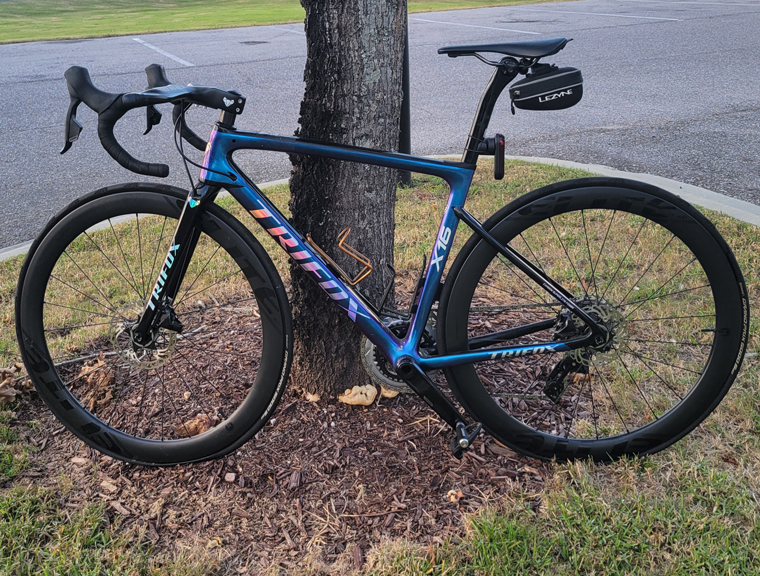
The question of how many gears a road bike “should” have doesn’t have a one-size-fits-all answer. From vintage 5-speed setups to modern 12-speed electronic groupsets, gear counts have evolved dramatically. The right number depends on your riding style, terrain, and budget. Let’s break down the factors to help you find your ideal setup.
The Evolution of Speed
Road bikes once topped out at 10 speeds, but today’s drivetrains offer up to 12 or even 13 cogs. More gears mean smaller jumps between ratios, letting you maintain optimal cadence (pedaling rhythm) on rolling terrain or long climbs. However, more isn’t always better—complexity, weight, and cost increase with each added cog.
Key Considerations
1. Rider Needs: Competitive cyclists often prefer 11- or 12-speed systems for seamless shifting under load. Casual riders or commuters might prioritize simplicity with 8-10 speeds.
2. Terrain: Hilly routes demand wider gear ranges. A compact chainset paired with an 11-34T cassette (common in 11-speed setups) offers climbing ease without sacrificing top-end speed.
3. Maintenance: More gears mean tighter tolerances. A 9- or 10-speed drivetrain is easier to adjust and cheaper to replace.
The Sweet Spot: 11-Speed Dominance
For most road riders, 11-speed strikes a balance. It provides ample range (e.g., 11-30T or 11-34T cassettes) and smooth transitions between gears. Brands like Shimano 105, SRAM Rival, and Campagnolo Centaur offer reliable mid-tier 11-speed groupsets that blend performance and affordability.
When Less is More
Beginners or budget-conscious riders might opt for 8-10 speeds. These systems are robust, cost-effective, and sufficient for flat to moderate terrain. Plus, wider gear spacing can reduce shifting frequency, which is less mentally taxing on long rides.
Cutting-Edge: 12-Speed and Beyond
High-end 12-speed groupsets (Shimano Dura-Ace, SRAM Red) cater to racers and tech enthusiasts. Hyper-precise shifting and expanded gear ranges maximize efficiency, but they come at a premium price—and not all frames/wheels are compatible.
Trifox's Approach: Versatility Meets Value
Trifox road bikes, offer customizable builds to match your gear preferences. Whether you prioritize the crispness of 11-speed Shimano or the simplicity of a 9-speed commuter setup, their ultralight carbon frames adapt to your needs without compromising durability.
Final Shift
Your ideal gear count hinges on where and how you ride. More speeds deliver precision, but simplicity has its perks. Test different setups if possible, and remember: the best drivetrain is the one that keeps you pedaling—and smiling—mile after mile.


























































